
When travelling to Japan it's easy to get distracted by the stunning landscapes and strong cultural identity. However it's important to remember that while you're there on your trip-of-a-lifetime, Japan is home to some of the most deliciously fresh cuisine found anywhere in the world.
In conjunction with the JNTO (Japan National Tourism Organisation), we've highlighted some of the best aspects of Japanese cuisine which you can look forward to!
Sushi
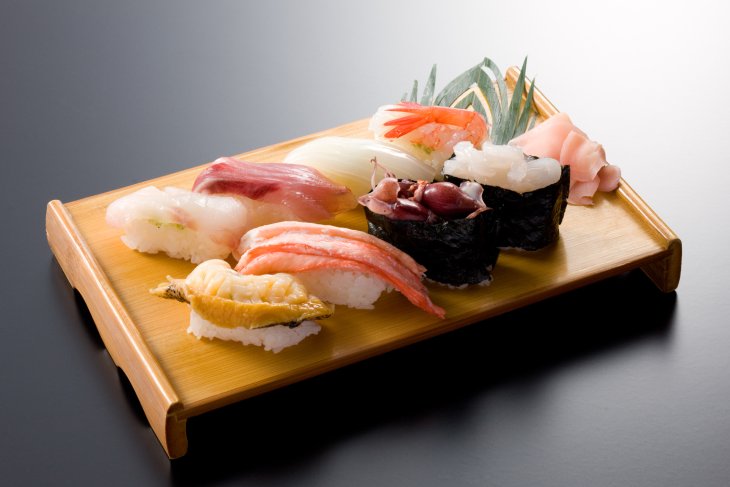
Sushi is without a doubt the most famous Japanese dish in Western culture. It is often thought that “sushi” refers to the seafood (or other) topping, but in actual fact it refers to rice which has been prepared with sushi vinegar. “Nigiri” - a bite-size square ball of vinegared rice topped with a small piece of seafood - is what most people will think of when we mention “sushi”. However, there are a variety of different kinds of sushi.
Most popular types of sushi:
- Maki-zushi (sushi rolls that are served in slices; “maki” means “roll”)
- Gunkan-maki (small “boats” of nori seaweed and rice topped with various ingredients; “gunkan” means “battleship”)
- Chirashi-zushi (sushi rice topped with various ingredients, a bit like a sushi pizza)
- Te-maki (cones of nori seaweed filled with sushi rice and other ingredients),
- Inari-zushi (deep-fried pouches of tofu containing sushi rice) - vegan friendly!
Sashimi
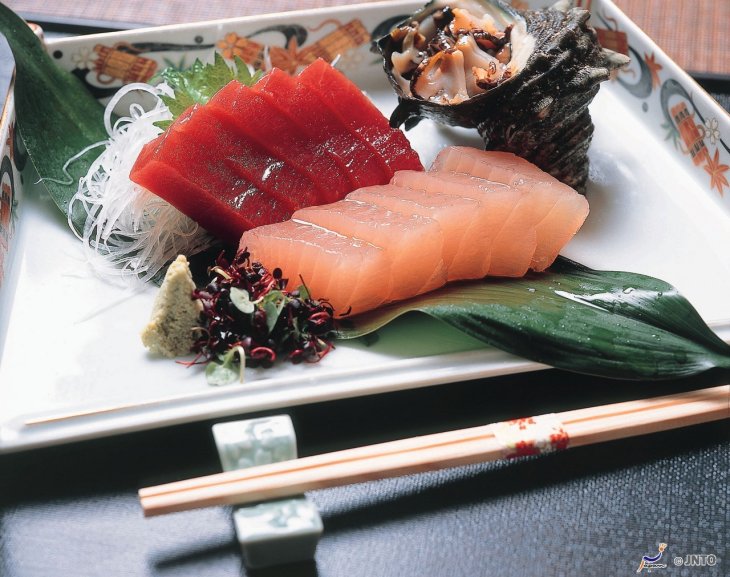
Sashimi, possibly the second-most popular Japanese food outside of Japan is sliced raw food eaten dipped in soy sauce. Similarly to Sushi, seafood is the most common type, howeverdespite being less common beef, deer, horse, and tofu skin can also be served sashimi-style.
The most popular types of sashimi include tuna, salmon, sea bream, bonito, squid, scallop, octopus, and sweet shrimp. So what's the difference between sashimi and sushi? It is quite common for people to confuse them both - the answer, sashimi has no rice!
Yakitori
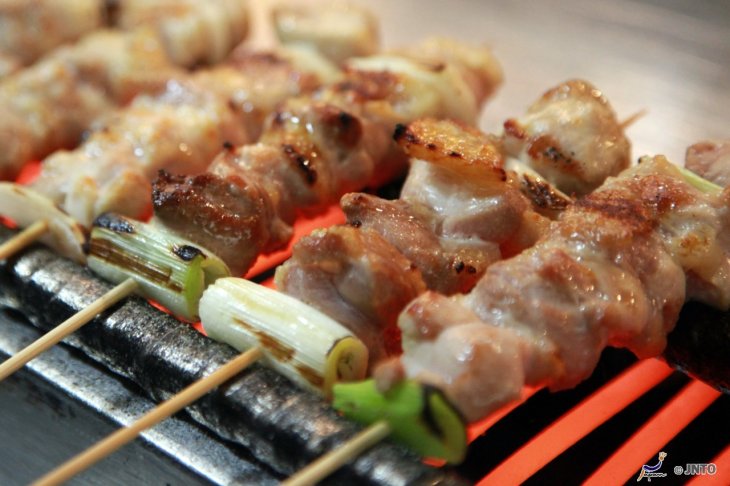
Yakitori are charcoal-grilled chicken skewers using bite-sized pieces from all different parts of the chicken. It is worth noting that the bite-sized pieces are taken from both inside and outside the chicken. They can be found on the menu at special yakitori restaurants called yakitori-ya; (“ya” means “shop”) as well as izakaya which are like Japanese pubs.
Popular varieties of Yakitori include:
- Momo (thigh meat)
- Tebasaki (chicken wings)
- Tsukune (meatballs)
- Negima (alternate pieces of thigh meat and leek)
- Torikawa (crispy chicken skin)
- Reba (liver)
Many places also offer vegetable varieties, including shiitake mushrooms, cherry tomatoes, leeks, green peppers, okra, and aubergine.
In many places, yakitori is sold by the stick or the set of two sticks, each costing a few hundred Yen per stick. You will often be given the choice of seasoning between salt (shio) and sticky sauce (tare). Since yakitori are usually cooked to order and served fresh from the grill, it is usual to order them in small batches and eat them accompanied by beer.
Tonkatsu

Tonkatsu literally means “pork cutlets” - these are thick slices of pork that have been rolled in breadcrumbs and deep-fried, you could say they are similar to German schnitzel. You usually have the option to choose between filet (hire), which is leaner and more tender, and loin (rosu) which is fattier and chewier.
Despite the name, other katsu varieties are available - made with other meats, such as beef (gyu-katsu), chicken (chikin-katsu), mincemeat (menchi-katsu), and ham (hamu-katsu), although tonkatsu is by far the most popular variety.
Popular dishes involving tonkatsu include tonkatsu teishoku (set meal of katsu and rice, miso soup, shredded cabbage and pickles), katsu-kare (Japanese curry topped with katsu), katsu-don (donburi rice bowl topped with katsu, egg and sliced onions), and katsu-sando (katsu sandwich, often also containing finely shredded cabbage and mustard).
Udon
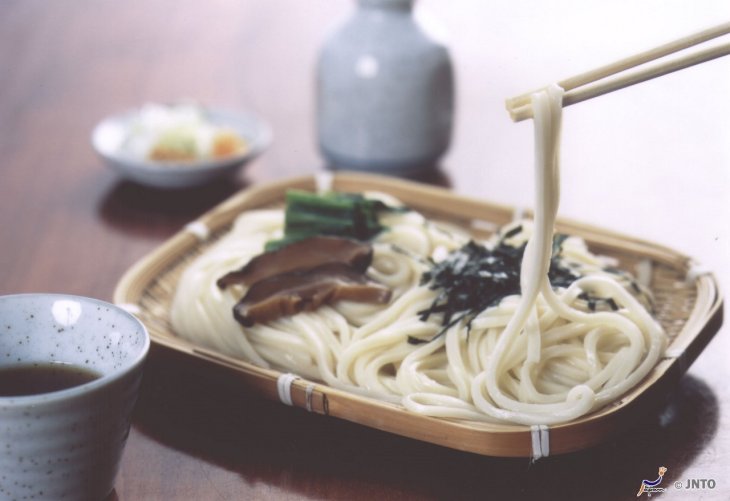
Udon is a well known type of Japanese noodles. Made from wheat flour, they are pasty white in colour and a glutinous chewy type texture. Traditionally Udon noodles are served either in a broth or dipped in sauce and are available in hundreds of delicious variations, both hot and cold.
Common kinds include kake-soba (hot; served in a bowl of clear broth and topped with sliced green onions), zaru-soba (cold; topped with nori seaweed shavings and served with a dipping sauce of chilled dipping sauce), tanuki soba (hot/cold; topped with crunchy bits of leftover fried tempura batter), kitsune soba (hot/cold; topped with thin slices of fried tofu), curry udon (hot; served in Japanese curry sauce).
Soba

Soba is another type of Japanese noodles. Soba noodles are made from buckwheat flour. Buckwheat is not a form of wheat and does not naturally contain gluten. The noodles are a brownish-grey colour, with a nutty texture and a similar thickness to spaghetti. They can be hot or cold, are are usually served either in a broth or dipped in sauce and are available in hundreds of delicious variations.
Common varieties are kake-soba (hot; served in a bowl of clear broth), zaru-soba (cold; topped with nori seaweed shavings and served with a dipping sauce of chilled dipping sauce), tanuki soba (hot/cold; topped with crunchy bits of leftover fried tempura batter), kitsune soba (hot/cold; topped with thin slices of fried tofu), sansai soba (hot; topped with wild mountain vegetables), nanban soba (hot; in a broth with leek and duck or chicken).
Karaage (fried chicken)
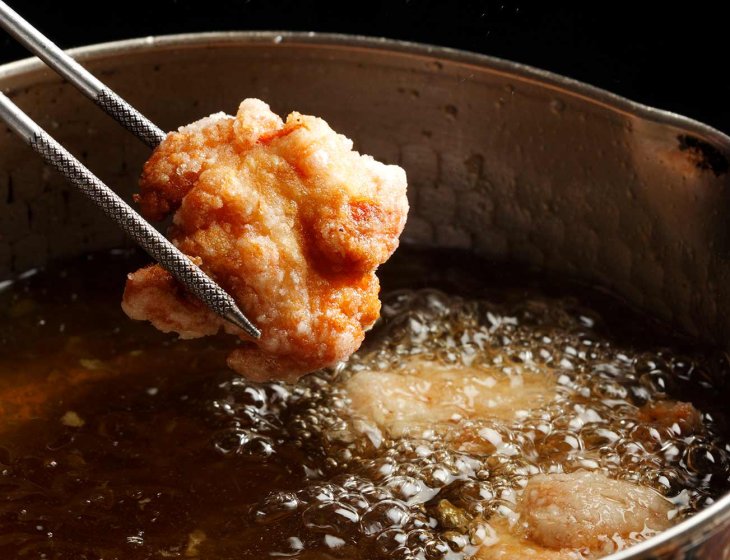
Karaage usually refers to chicken karaage, Japanese-style fried chicken. However Karaage properly refers to a Japanese cooking technique in which food is optionally marinated in a sauce before being lightly coated in seasoned wheat flour and deep-fried in a light oil. Chicken is the most popular variety by some distance, however other meat and fish can also be cooked in the same way.
Gyoza
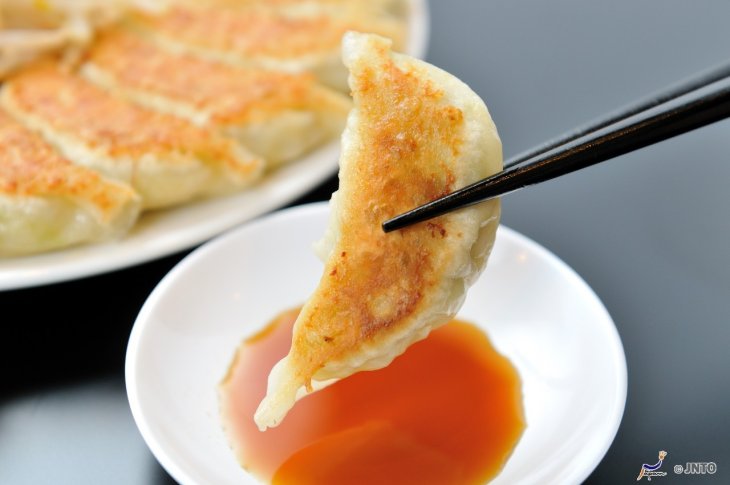
Japanese dumplings - known as Gyoza are bite-size amounts of mincemeat and vegetables wrapped in a thin skin and cooked. Gyoza originally came from China, but have now evolved to become a very popular Japanese dish.
A traditional filling will include is pork mincemeat, onion, cabbage, garlic, ginger, soy sauce, and sesame oil, but you will also come across rarer varieties such as shrimp, mushroom or cheese. The three types of gyoza are yaki-gyoza (pan-fried - soft and juicy on top with a crispy bottom), sui-gyoza (boiled - chewy and soft) and age-gyoza (deep-fried until crispy).
Shabu-shabu

Shabu-shabu is a Japanese hotpot dish consisting of pieces of tender, thinly sliced meat and seasonal vegetables cooked by being plunged into a steaming pot of water or broth. The thinly sliced meat is beef more often than not, however it can sometimes be pork.
A unique aspect to shabu-shabu is that diners cook the ingredients in shabu-shabu for themselves at the table. Each diner selects the pieces they want to eat and adds them to the large communal pot of broth on the table. Since all the ingredients are sliced wafer-thin, the meat cooks in a matter of seconds with the harder vegetables taking only a few minutes.
After cooking, the piping hot pieces of food are dipped in a sauce before being eaten. Popular sauces are yuzu citrus sauce and sesame sauce. Bonus fact: the name comes from the sound made when the slices of meat are swished around in the boiling broth by the diners - 'shabu-shabu'.
Ramen
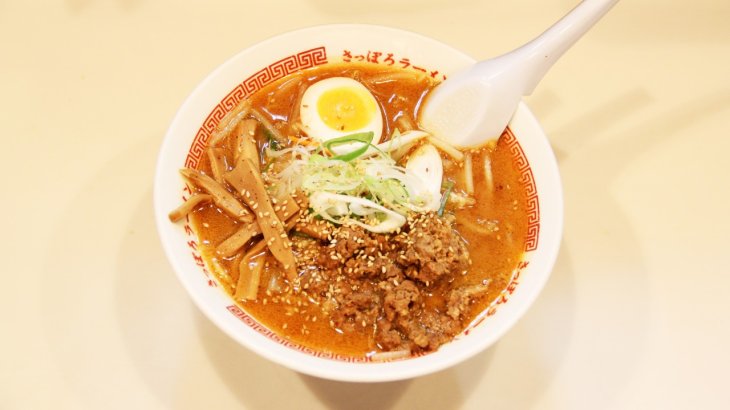
Ramen is a hot soup noodle dish that originally came from China, but has evolved into many distinct Japanese varieties over the years. Ramen is one of the most popular Japanese dishes outside of Japan. However in Japan, a bowl of ramen is usually very cheap, making it an ideal option for a hot, filling meal for budget travellers.
Ramen varieties are usually categorized according to the standout ingredient in the broth. The most common varieties are soy sauce (shoyu), salt (shio), miso, tonkotsu (pork broth).
While the broth is the base of any good ramen dish, the topping it what makes it come alive. Common toppings include chashu (fatty slices of braised pork), chopped leeks or green onion (negi), preserved bamboo shoots (menma), egg (tamago), bean sprouts (moyashi), and seaweed.
Kaiseki ryori
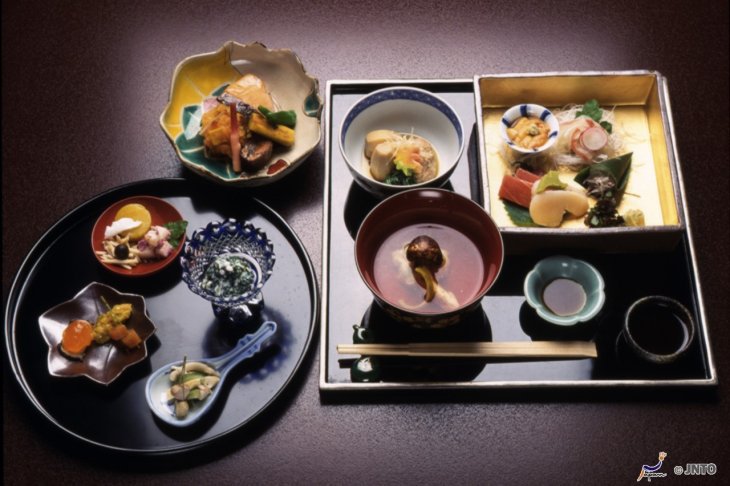
A traditional multi-course Japanese haute cuisine, Kaiseki ryori origins lie centuries ago in the simple meals served to accompany the tea ceremony, but over time it has evolved into an elaborate dining experience popular among aristocrats and nobility.
Consisting mainly of vegetables and fish with a seasoning base of seaweed and mushrooms, the dishes are characterised by their refined flavour. Following a prescribed order of dishes from start to finish, each dish is designed to showcase a traditional cooking technique. Typically they include a selection of boiled, grilled, deep-fried, steamed, and vinegared dishes as well as set items such as sake, rice, miso soup, and pickles.
Regarded as Japan's most exquisite culinary achievement, Kaiseki ryori is served in specialised restaurants such as ryotei (traditional restaurants), as well as ryokan and minshuku (traditional inns).
Want to find out more?
If you're looking to find out more about food and drink in Japan (especially within certain areas), head over to the JNTO website to find out mopre on the below cities & prefectures:
Sapporo Cuisine - find out more
Tokyo/Yokohama - find out more
Nagoya/Shizuoka - find out more
Fukuoka/Kumamoto/Oita - find out more
The JNTO also have a great online article which tells you all about eating and drinking etiquette - take a look now!
This content was released in conjunction with the Japan National Tourism Organisation (JNTO). Some images courtesy of JNTO.

